Developing a solid business case is a critical step in the B2B sales process. It involves creating a clear and comprehensive argument that presents the financial benefits of a solution so that a customer can make an informed purchasing decision.
There are several essential steps to take to begin building a business case. These include:
- Conducting thorough research and discovery
- Identifying the customer’s needs and pain points
- Estimating the size of the customer’s problems.
Financial projections involve calculating potential cost savings, labor savings (sometimes referred to as productivity gains), and revenue increases.
Cost Savings
Saving hard dollars is often the easiest calculation to make. This involves identifying all the money being spent by the customer related to the proposed solution. Some costs will be eliminated by the new solution, such as hardware purchases, maintenance agreements, and subscriptions. Others will be reduced but not eliminated, such as materials, consumables, and energy.
Support the projected cost savings with case studies and success stories that demonstrate how the solution worked for other companies in similar industries. This provides social proof and helps build credibility.
Labor Savings
Labor savings can be the most difficult value dimension to sell to customers when presenting a business case. For example, labor savings are often spread across many workers’ time and may be considered soft or indirect benefits without a bottom-line impact. Customers may need to take action to realize the labor savings, such as reducing headcount, implementing a hiring freeze, or reallocating employees to other duties. Also, members of the buying committee may include workers that will be impacted by these actions.
Follow this methodology to overcome these potential objections:
- Identify all the areas where the solution can help save labor costs. Categorize them by role, work process, or other relevant categories.
- Calculate the size of the problem by estimating how many hours each employee spends on any activities that will be displaced by the solution. This could include reporting, manual processes, rework, maintenance, troubleshooting, quality control inspections, and more. Quantify the savings in both dollars and hours saved and assign a ramp-rate to each year’s savings if the analysis is for a period longer than one year.
- Apply a “time savings realized” factor to the savings, which can vary greatly depending upon the circumstances. While this acknowledges that the solution saves time, the employer may not fully realize the time savings without reducing headcount and/or overtime, minimizing new hires, or increasing value-added activities.
To further enhance believability, demonstrate expertise and knowledge of the industry by sharing industry trends, providing insights, or discussing best practices other customers have successfully used.
Revenue Increases
Sales growth projections can also be a hard sell, especially if a solution only indirectly contributes to revenue growth. To overcome natural skepticism, it’s essential to have a deep understanding of the customer’s business.
Customers often assess potential solutions based on the criteria of “better, cheaper, faster.” While these factors are undoubtedly important, they don’t always paint a complete picture. Evaluating a solution beyond its primary purpose and how it can improve secondary KPIs and boost sales growth is also critical.
For example, suppose a manufacturer wants to upgrade its human resources system with a talent management software solution. It’s important to consider not just the potential time and cost savings, but also how the new system can improve employee skills and career development, leading to increased business growth and profitability.
Similarly, a retail chain considering upgrading its communication networks should not only compare the costs of traditional infrastructure versus newer technology, but also consider the potential network performance improvements that could lead to faster sales growth through innovative in-store customer experiences.
Be prepared for customers to push back and dismiss the projected impact of revenue gains. To address this, it’s helpful to show the total potential revenue increase while allowing customers to discount the projected result to ensure their buy-in.
Conclusion
Building a comprehensive business case is crucial for B2B sellers to convince customers to make a purchasing decision. Understanding the customer’s needs, pain points, and estimating the size of their problems are crucial steps in outlining the financial benefits of a solution.
While identifying cost savings is typically easy, sellers must also make projections for labor savings and revenue growth, which may be met with skepticism. Highlighting other customers’ success stories can help overcome objections, while remaining flexible enough to adjust projected values.

Resources
Connect with David Svigel on LinkedIn.
Join the Value Selling for B2B Marketing and Sales Leaders LinkedIn Group.
Visit the ROI Selling Resource Center.














